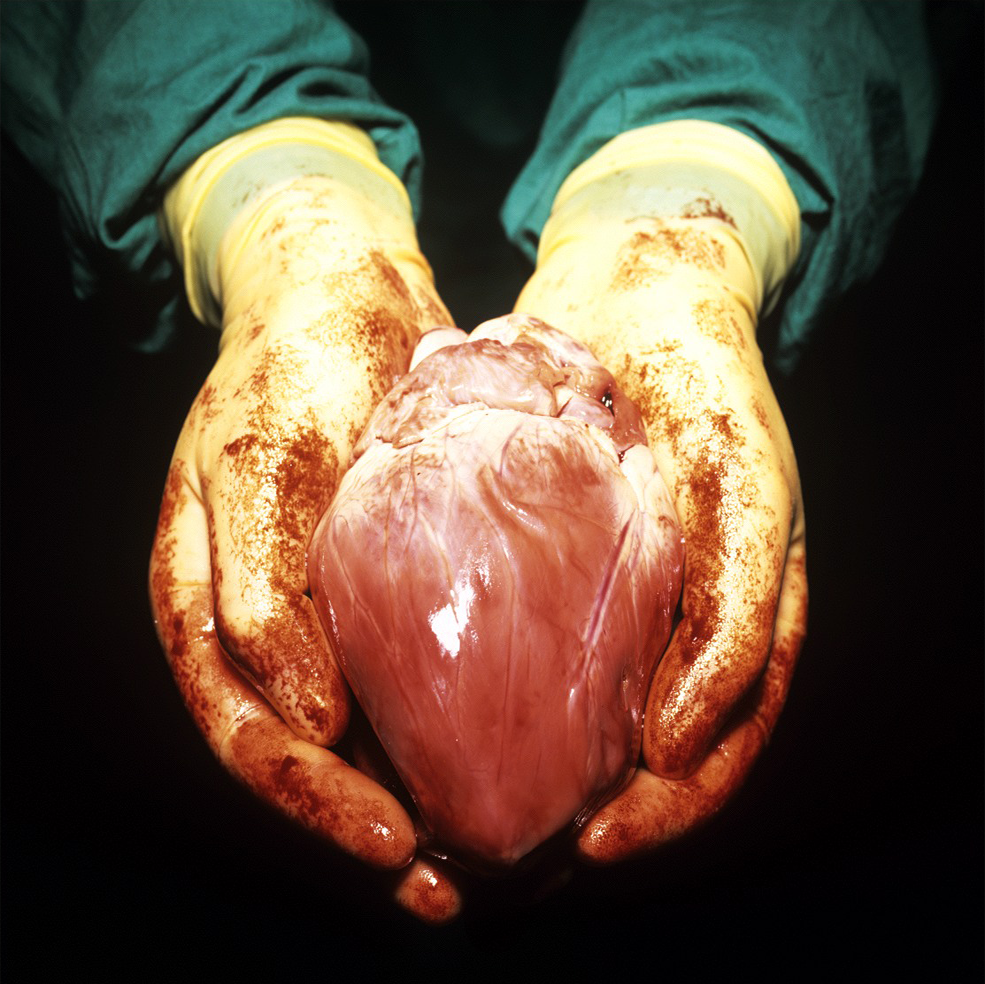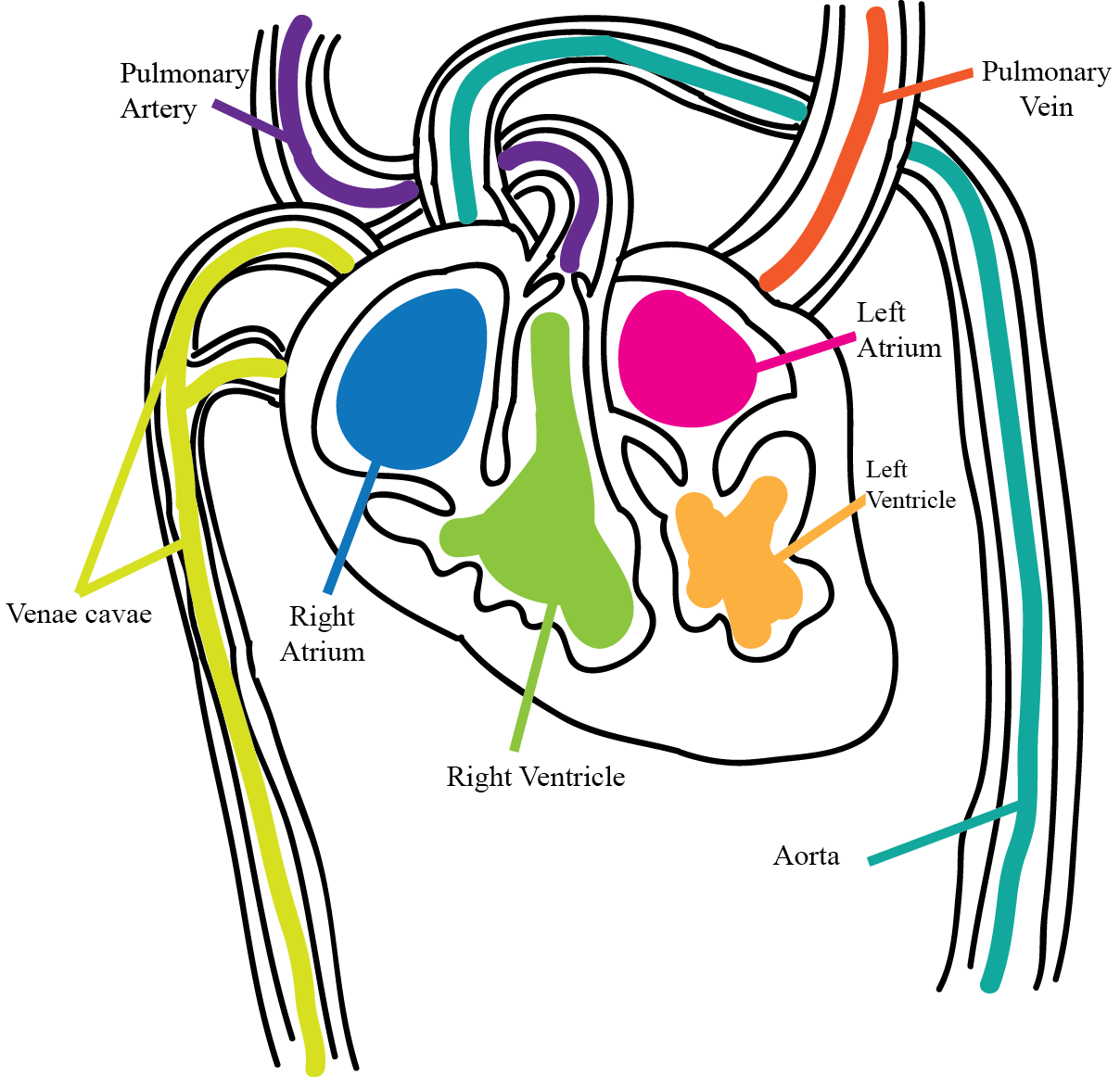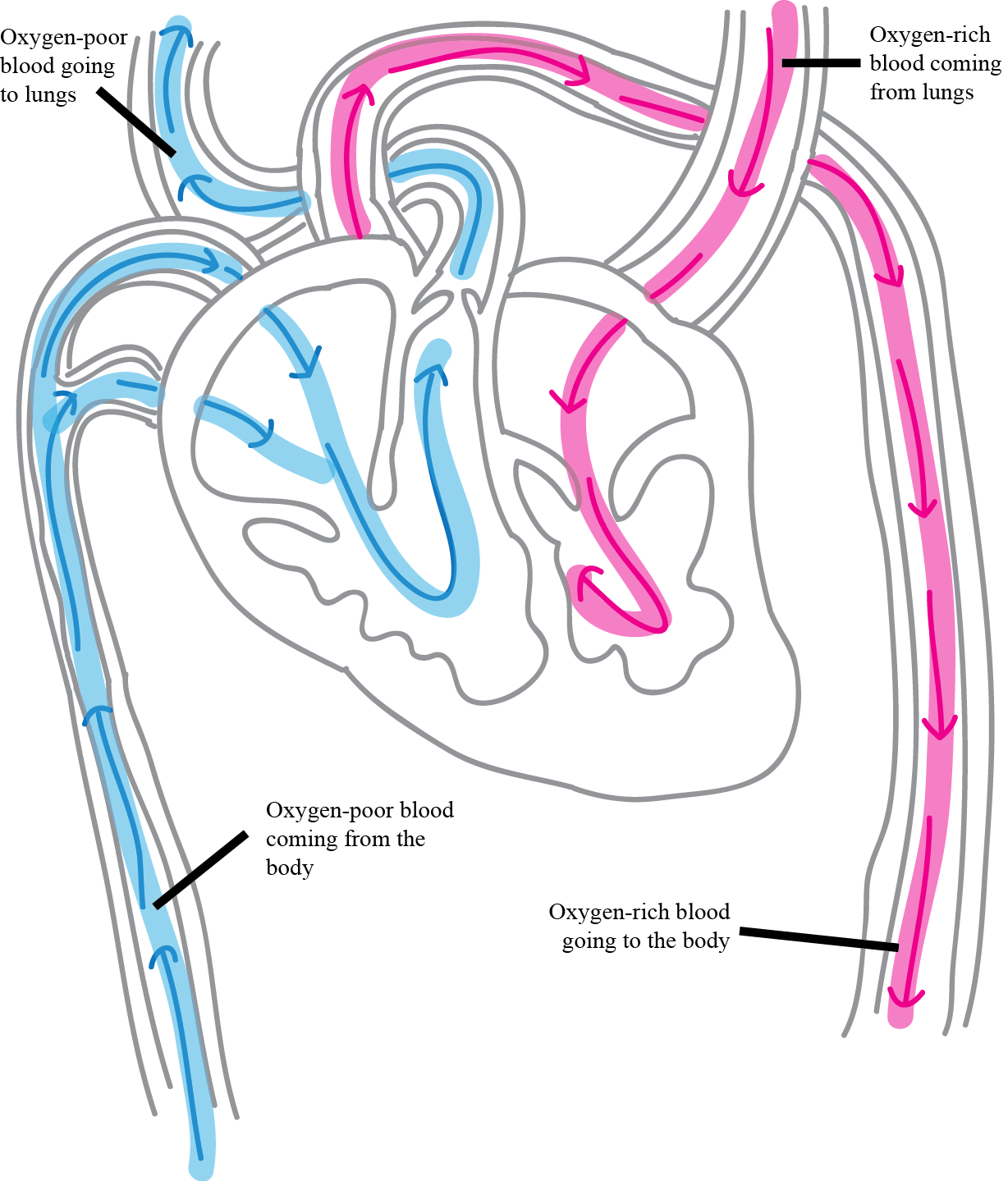
Chapter 1. Chapter 27: Cardiovascular System
1.1 Introduction


Welcome to the Interactive Study Guide for Chapter 27: Cardiovascular System! This Study Guide will help you master your understanding of the chapter's Driving Questions, using interactive Infographics and activities, as well as targeted assessment questions. Click "Next" to get started, or select a Driving Question from the drop-down menu to the right.
Death in Bogalusa:
From tragic deaths in a southern town, insight into heart disease
DRIVING QUESTIONS
- What structures make up the cardiovascular system, and how does blood flow through the system?
- What is the structure of the heart and of the different types of blood vessels?
- What is the composition of blood, and what does blood do?
- What is cardiovascular disease, and what are some of the risk factors for developing it?
1.2 Driving Question 1:
Driving Question 1
What structures make up the cardiovascular system, and how does blood flow through the system?
Why should you care?
One in three deaths in the United States is caused by cardiovascular disease. This means that diseases of the heart and/or blood vessels account for more deaths than cancer. Cardiovascular disease is an effective killer because it largely goes undetected until there is a problem, and by then it is usually too late. Since your heart and blood vessels are essential to sustain life, any alteration in function or effectiveness of this system will typically lead to death. Why is your cardiovascular system so important for life? To answer that question, let’s take a look at the organs and structures that make up the cardiovascular system and determine the function of each.
What should you know?
To fully answer this Driving Question, you should be able to:
- List the components of the cardiovascular system and identify the function of each.
- Trace the route of blood flow through the cardiovascular system.
Infographic Focus
The Infographics most pertinent to the Driving Question are 27.2 and 27.3.
Test Your Vocabulary
Choose the correct term for each of the following definitions:
| Term | Definition |
|---|---|
| Blood vessels (except the coronary veins) that carry blood toward the heart. | |
| The chambers of the heart that receive blood. The right atrium receives low-oxygen blood from the body, and the left atrium receives high-oxygen blood from the lungs. | |
| A disease of the heart or blood vessels or both. | |
| A restriction of blood flow to the heart resulting in damage to the heart muscle. | |
| The large artery that receives blood from the left ventricle. | |
| Blood vessels (except the coronary arteries) that carry blood away from the heart. | |
| The muscular pump that generates force to move blood throughout the body. | |
| The system that transports nutrients, gases, and other critical molecules throughout the body. It consists of the heart, blood vessels, and blood. | |
| The blood vessels that deliver oxygenated blood from the lungs to the heart muscle. | |
| The circulation of blood between the heart and the lungs. | |
| The chambers of the heart that pump blood away from the heart. The right ventricle pumps blood to the lungs, and the left ventricle pumps blood to the body. | |
| The circulation of blood between the heart and the rest of the body. |
List the components of the cardiovascular system and identify the function of each.
1.
What are the components of the cardiovascular system?
2.
Match the components below with their main function.
| Carry blood away from heart | |
| Carry blood toward heart | |
| Muscular pump that moves blood through the body | |
| Carries oxygen to all parts of body and takes away carbon dioxide waste |
Trace the route of blood flow through the cardiovascular system.
3.
Starting with oxygenated blood coming from the lungs, describe the path that the blood takes through the body, ending with the deoxygenated blood returning to the lungs.
4.
What is the main function of the pulmonary circuit?
5.
What is the main function of the systemic circuit?
Review Questions
6.
What component(s) of the cardiovascular system is (are) essential to maintain bodily function? (Mark "yes" for all that apply.)
| a. heart | |
| b. veins | |
| c. arteries | |
| d. blood |
7.
True or False: Oxygen-rich blood travels directly from the lungs to all parts of the body.
| A. |
| B. |
8.
What is the primary function of the heart?
| A. |
| B. |
| C. |
| D. |
1.3 Driving Question 2:
Driving Question 2
What is the structure of the heart and of the different types of blood vessels?
Why should you care?
You have likely heard that clogged arteries are bad and may lead to a heart attack. Maybe you know someone who has had a stent (a mesh tube that holds open a weak or damaged blood vessel), placed in an artery to reestablish blood flow. If blood flow is so important to life, it is good to understand how blood is pushed around the body and the structures that carry it.
What should you know?
To fully answer this Driving Question, you should be able to:
- Draw the major components of a human heart and trace the path that blood (both oxygen-rich and oxygen-poor) follows as it flows through the organ.
- Compare and contrast arteries and veins.
Infographic Focus
The Infographics most pertinent to the Driving Question are 27.2 and 27.3.
Test Your Vocabulary
Choose the correct term for each of the following definitions:
| Term | Definition |
|---|---|
| Blood vessels (except the coronary arteries) that carry blood away from the heart. | |
| The chambers of the heart that receive blood. The right atrium receives low-oxygen blood from the body, and the left atrium receives high-oxygen blood from the lungs. | |
| Blood vessels (except the coronary veins) that carry blood toward the heart. | |
| The muscular pump that generates force to move blood throughout the body. | |
| The large artery that receives blood from the left ventricle. | |
| The circulation of blood between the heart and the rest of the body. | |
| The circulation of blood between the heart and the lungs. | |
| The chambers of the heart that pump blood away from the heart. The right ventricle pumps blood to the lungs, and the left ventricle pumps blood to the body. | |
| The blood vessels that deliver oxygenated blood from the lungs to the heart muscle. |
Draw the major components of a human heart and trace the path that blood (both oxygen-rich and oxygen-poor), flows through the organ.
9.
In your notebook, draw an anatomically correct human heart and label all major structures.

10.
Heart valves prevent the blood from flowing backward through the heart. Why is this important?
11.
On your diagram of the heart, in your notebook, show the path that blood flows through the organ. Also differentiate between oxygenated blood and deoxygenated blood.

12.
In the systemic circuit, veins carry oxygen-poor blood back to the heart, and arteries carry oxygen-rich blood to body tissues. In the pulmonary circuit, veins carry the oxygen-rich blood to the heart while arteries carry oxygen-poor blood to the lungs. Given what you know about the direction of blood flow, why do you think the blood vessels are named the way they are in the pulmonary circuit?
Compare and contrast arteries and veins.
13.
Fill in the following table with the type of blood vessel (artery or vein) that has that characteristic (can be more than one answer in a cell):
| Present in the pulmonary circuit | |
| Low-pressure vessels | |
| Supplies oxygen-rich blood to the heart muscle itself | |
| Carries oxygen-rich blood | |
| Thin walled | |
| Carries oxygen-poor blood | |
| Present in the systemic circuit | |
| High-pressure vessels | |
| Have valves to control direction of blood flow in systemic circuit |
14.
Why do you think that most heart attacks are caused by blockages in the coronary arteries?
Review Questions
15.
True or False: Arteries move blood away from the heart.
| A. |
| B. |
16.
Which heart chamber receives oxygen-poor blood from the body?
| A. |
| B. |
| C. |
| D. |
17.
Arteries in the systemic circuit do not need valves to maintain proper blood flow because the blood is flowing under
| A. |
| B. |
1.4 Driving Question 3:
Driving Question 3
What is the composition of blood, and what does blood do?
Why should you care?
Every tissue in your body needs blood to survive. For some parasitic organisms, like fleas and ticks, blood is the only food source necessary to maintain excellent health. Other parasites, like the one that causes malaria, actually live in blood, and their life cycle depends on it. So what makes blood so important to many living organisms? In short, blood is a nutrient- and oxygen-rich liquid that can easily be transported all over the body to deliver vital components to almost every cell and carry away waste products generated by these cells. Blood is also an excellent delivery system for the immune cells, which must fight infection and patrol every area of the body. If you lose too much blood, your body will stop functioning and you will not survive.
What should you know?
To fully answer this Driving Question, you should be able to:
- Describe the main components of human blood and what each component does.
- Explain how capillaries contribute to the overall function of blood.
Infographic Focus
The Infographics most pertinent to the Driving Question are 27.5 and 27.6.
Test Your Vocabulary
Choose the correct term for each of the following definitions:
| Term | Definition |
|---|---|
| Leukocytes are involved in the body’s defenses (the immune response). | |
| The smallest blood vessels. Capillaries are the sites of gas, nutrient, and waste exchange between the blood and tissue cells. | |
| Fragments of cells involved in blood clotting. | |
| type of blood cell specialized for carrying oxygen. |
Describe the main components of human blood and what each component does.
18.
Match the following definitions to the blood component.
| Essential to cell survival | |
| Liquid composed of water and protein | |
| Lack a nucleus, carry oxygen | |
| Involved in immune response | |
| Waste product excreted by cells | |
| Fragments of cells, involved in blood clotting |
19.
Why is it a benefit that blood is a liquid?
20.
The following is a list of the physical characteristics of a red blood cell. Next to each characteristic, explain how that feature aids in the function of the red blood cell.
Small size (in comparison to other body cells):
Unique concave shape:
Flexibility:
No nucleus:
Explain how capillaries contribute to the overall function of blood.
21.
As oxygen-rich blood moves away from the heart, the vessels that it travels in get smaller and smaller until it reaches the capillaries, the smallest type of blood vessel. In a short paragraph, explain why capillaries are the destination for oxygenated blood and how their characteristics aid in the overall function of blood.
Review Questions
22.
Which is NOT a component of human blood?
| A. |
| B. |
| C. |
| D. |
23.
True or False: the circulatory system actually bathes cells in blood for nutrient and oxygen exchange to occur.
| A. |
| B. |
24.
Capillaries are (mark "yes" for all that apply):
| a. the largest blood vessels in our system. | |
| b. the site of oxygen and nutrient exchange between the blood and tissue cells. | |
| c. not involved in the circulatory system. | |
| d. the site where cellular waste diffuses into the blood. |
1.5 Driving Question 4:
Driving Question 4
What is cardiovascular disease, and what are some of the risk factors for developing it?
Why should you care?
As stated previously, one in three deaths in the United States is caused by cardiovascular disease. Unfortunately, it is likely that you will know, or already do know, someone who has had cardiovascular disease. With the obesity epidemic on the rise, so are the risk factors and prevalence of cardiovascular disease. Many of the risk factors that can lead to cardiovascular disease are preventable, especially when a successful prevention strategy is established early in life. It is important to know which risk factors are under your control and how to eliminate them from your life.
What should you know?
To fully answer this Driving Question, you should be able to:
- Describe some forms of cardiovascular disease or risk factors that can affect cardiovascular health.
- List and describe controllable risk factors for cardiovascular disease and explain how each contributes to the development of disease.
- Compare and contrast the two forms of cholesterol in the blood and how an excess of one may lead to cardiovascular disease.
- Describe some preventive measures that lower an individual’s risk of cardiovascular disease.
Infographic Focus
The Infographics most pertinent to the Driving Question are 27.1, 27.4, and 27.7 to 27.9.
Test Your Vocabulary
Choose the correct term for each of the following definitions:
| Term | Definition |
|---|---|
| The overall pressure in blood vessels, expressed as the systolic pressure over the diastolic pressure. | |
| A disease process that restricts blood flow through arteries; also known as hardening of the arteries. | |
| A form of cholesterol and protein in the blood that contributes to cardiovascular disease. | |
| A restriction of blood flow to the heart, resulting in damage to the heart muscle. | |
| A form of cholesterol and protein that is protective. | |
| A disease of the heart or blood vessels or both. | |
| The pressure in arteries when the ventricle is relaxed. | |
| A lipid that is transported in the blood by specialized proteins. | |
| disease characterized by chronically elevated levels of blood sugar. | |
| Raised fatty deposits that accumulate inside arteries, limiting the flow of blood. | |
| The pressure in arteries at the time the ventricle contracts. | |
| A disruption in blood supply to the brain. | |
| Anything (e.g., a behavior or exposure) that increases the probability of developing a disease. | |
| Elevated (high) blood pressure. | |
| The detectable force of blood entering arteries, e.g. the neck or wrist. |
Describe some forms of cardiovascular disease or risk factors that can affect cardiovascular health.
25.
The following is a list of common cardiovascular diseases or risk factors that can affect cardiovascular health. Next to each, list the definition, biological manifestation of the disease and the organ(s) or component(s) the disease affects. The first entry is filled out for reference.
| Disease | Definition | Biological Manifestation | Organ(s) or Component(s) Affected |
|---|---|---|---|
| Heart Attack | Event that occurs when the heart muscle does not receive a steady or sufficient blood flow, causing damage. | Typically caused by built-up fatty deposits (plaques) in the coronary arteries. | Heart, coronary arteries |
| Stroke |
Fill in: none
|
Fill in: none
|
Fill in: none
|
| Hypertension |
Fill in: none
|
Fill in: none
|
Fill in: none
|
| High Cholesterol |
Fill in: none
|
Fill in: none
|
Fill in: none
|
| Atherosclerosis |
Fill in: none
|
Fill in: none
|
Fill in: none
|
List and describe controllable risk factors for cardiovascular disease and explain how each contributes to the development of disease.
26.
What is a controllable risk factor?
27.
For comparison, what is an example of an uncontrollable risk factor for cardiovascular disease?
28.
What are the highest controllable risk factors for cardiovascular disease?
29.
Choose one controllable risk factor from your answer and describe how it could lead to heart disease.
Compare and contrast the two forms of cholesterol and discuss how an excess of one may lead to cardiovascular disease.
30.
What is the difference between LDL and HDL?
31.
Which form of cholesterol can be harmful to cardiovascular health? Why?
32.
If this form of cholesterol can be harmful, why does the body produce it?
Describe some preventive measures that lower an individual’s risk of cardiovascular disease.
33.
For each of the risk factors, describe preventive measures that may reduce an individual’s risk of developing cardiovascular disease.
Obesity:
Smoking:
High LDL:
High blood pressure:
34.
Why does Dr. Berenson say that preventive measures must begin in childhood? Do you agree?
Review Questions
35.
Which is NOT an example of cardiovascular disease?
| A. |
| B. |
| C. |
| D. |
36.
Which of the following is NOT an organ or body component that can be affected by cardiovascular disease?
| A. |
| B. |
| C. |
| D. |
37.
True or False: An individual can always lower all of his or her risk factors for cardiovascular disease.
| A. |
| B. |
38.
Which of the following is an uncontrollable risk factor for cardiovascular disease?
| A. |
| B. |
| C. |
| D. |
Activity results are being submitted...